All products featured are independently chosen by us. However, SoundGuys may receive a commission on orders placed through its retail links. See our ethics statement.
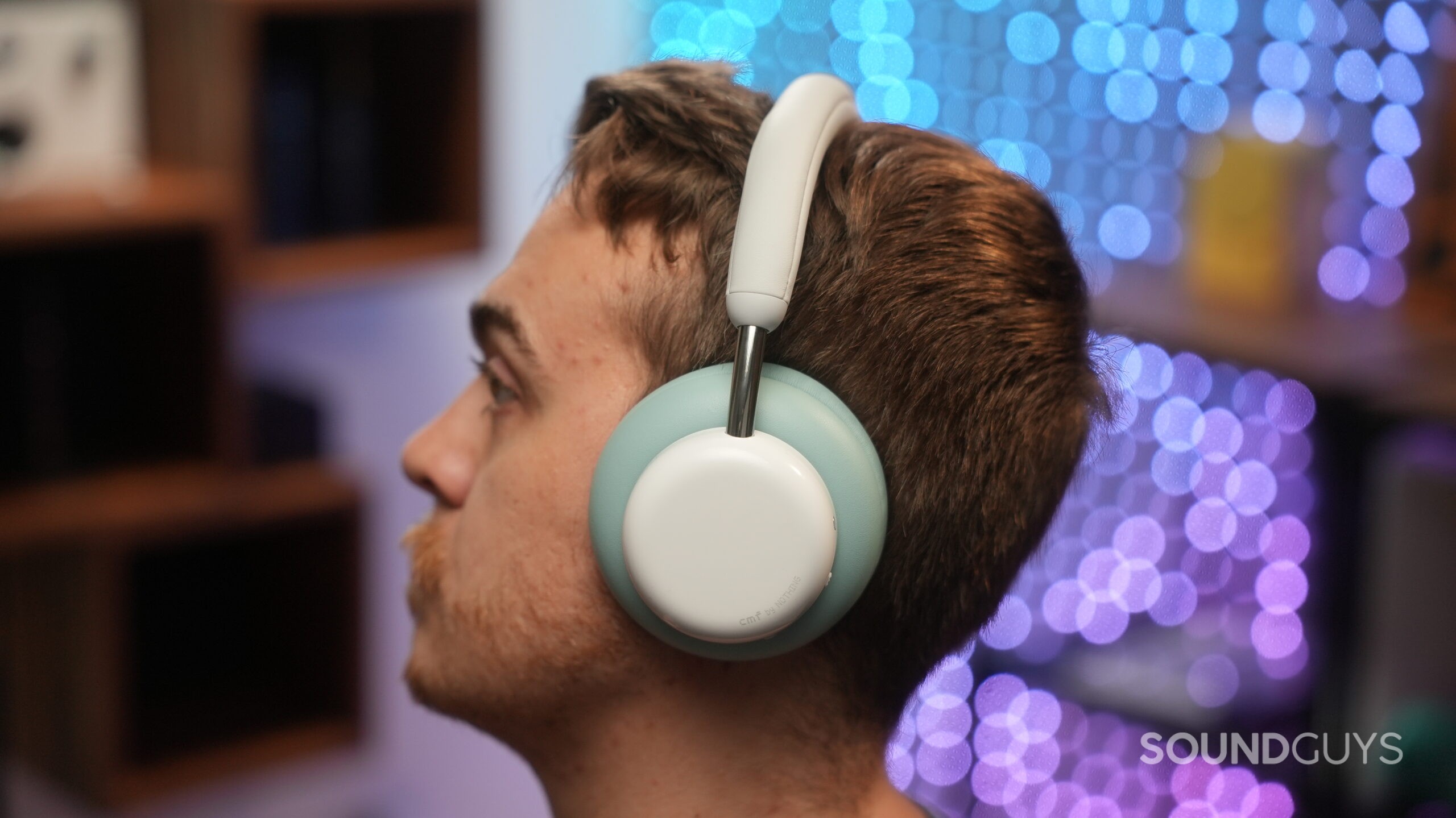

CMF Headphone Pro review: A solid B-side
October 31, 2025


CMF Headphone Pro
Weight: 283g
CMF has built its reputation on budget earbuds that punch above their weight class, but the Headphone Pro marks the brand’s first venture into over-ear territory. At $99, these headphones pack specs that seem almost too good to be true: LDAC support, adaptive ANC up to 40dB, a claimed 100-hour battery life (with ANC off), and CMF’s signature modular design with swappable ear cushions. After spending some time with the Headphone Pro, I can tell you whether CMF’s value-focused approach translates to full-sized headphones—or if the brand is stretching itself too thin.
The CMF Headphone Pro are for casual listeners seeking long battery life and solid ANC performance at a budget price. Those who want colorful, eye-catching headphones and don’t mind settling for basic EQ settings will appreciate what these offer, especially if you like a lot of bass. However, if you value premium build quality or advanced sound customization, you’ll want to look elsewhere.
This article was published on Oct 30th, 2025, and this is the first version of the article. Updates will follow as the market changes.
What’s it like to use the CMF Headphone Pro?
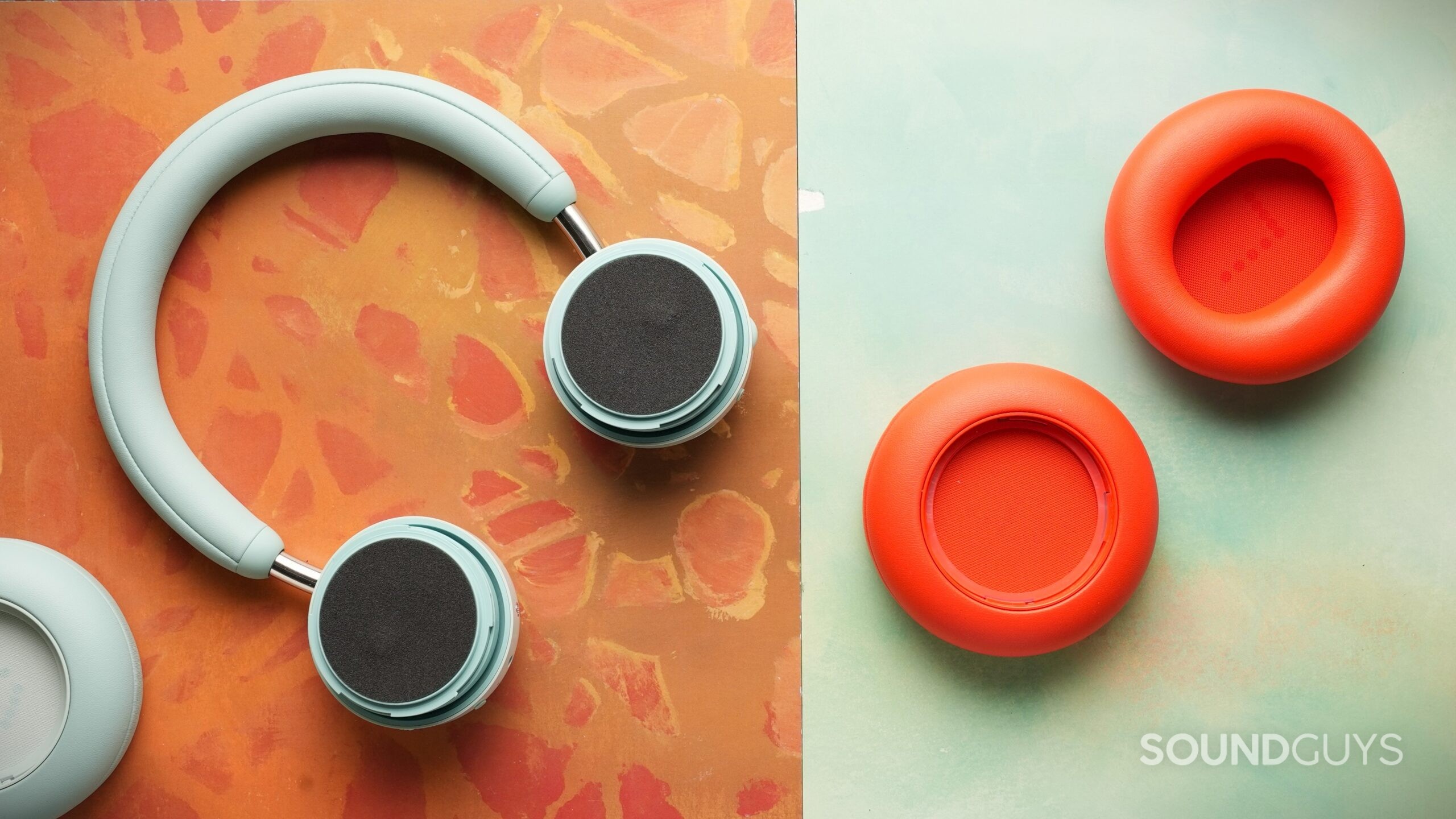
The CMF Headphone Pro looks very Bubblegum pop. Aesthetically, they lean heavily into CMF’s playful, colorful design language with its swappable ear cushions and bold colorways. While the modular approach is clever in theory—letting you swap cushions for different colors (and potentially different materials in the future)—the overall look and feel skews more toy-like than premium. It’s also possible to accidentally screw the right ear pad onto the left side, and vice versa, if you aren’t careful, or screw them on upside down. Of course, if you do so, you won’t get a good seal, and a keyed attachment system could have avoided that. The earcups themselves are large and create a good seal around my ears, but the stiff headband lacks adequate padding, at least for my head, leading to discomfort after just a couple of hours of wear.
The build quality didn’t inspire much confidence when I first picked them up. The all-plastic construction is lightweight but feels cheap and hollow, with enough flex and creak to make me wonder how long they’ll last. Though, to be fair, they’ll probably survive being tossed in a bag. The headphones rotate flat for storage and come with a basic cloth travel pouch, but they don’t fold up, making them bulkier to pack than competitors at this price point. The included analog cable and instructions round out a minimal accessories package.
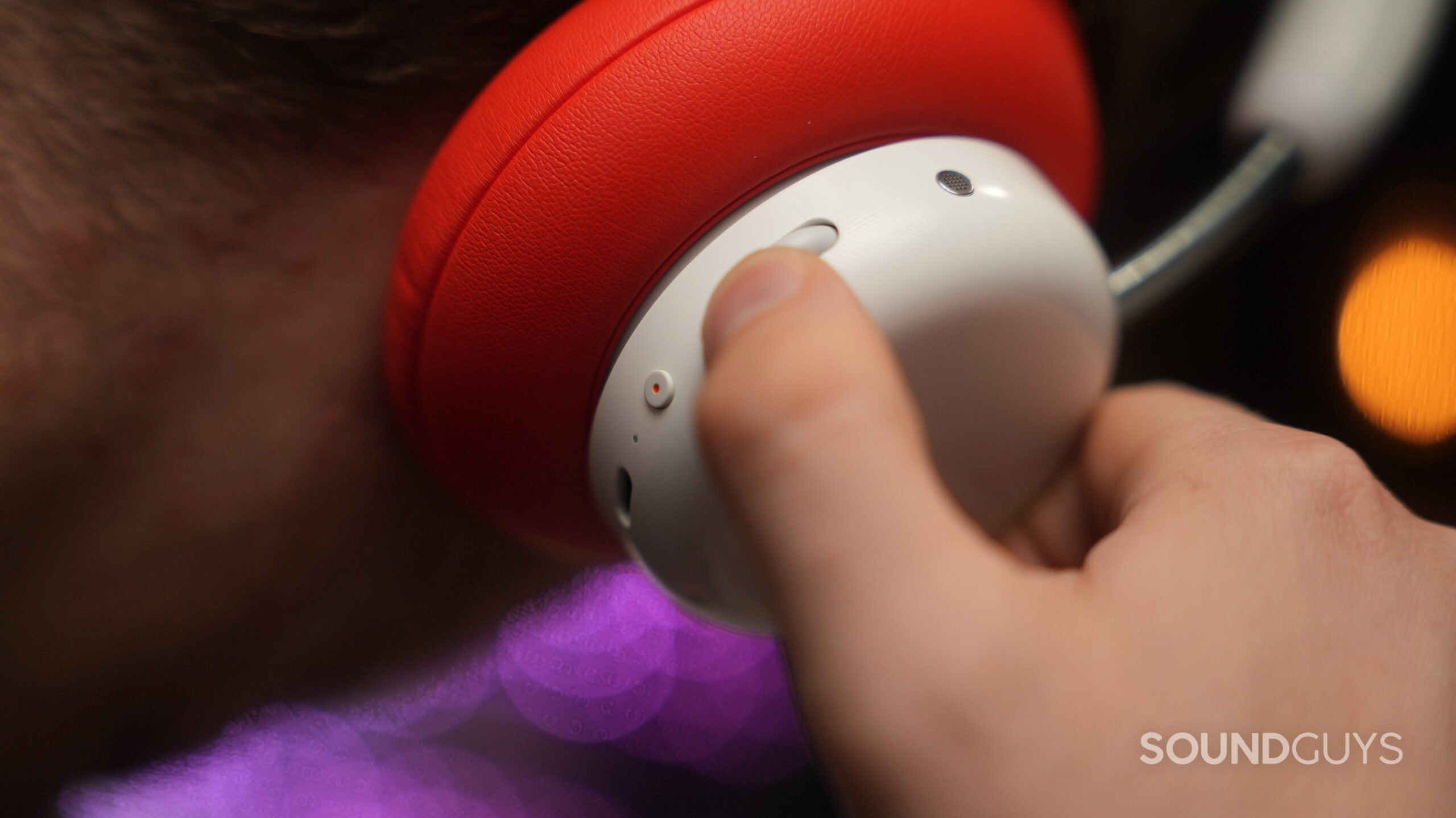
The controls are where things got frustrating. Despite the headphones’ bulky size, all the buttons and sliders are surprisingly small and clustered together on the knobs of each earcup. The multi-function roller—which you can scroll to adjust volume or press in to control ANC modes—is easy to locate by touch. However, the power and smart assistant buttons, as well as the Energy Slider, all felt too small for my fingers to find. The Energy Slider itself is a smooth, clickless switch that adjusts bass emphasis by default but can be switched to adjust treble within the app. People who enjoy a lot of bass might like to crank it up, but I found it to be a bit of a gimmick that didn’t improve the sound quality (more on that later).
The smart assistant button can be reassigned to different functions in the Nothing X app, which adds some flexibility, but the cramped control layout makes accidental presses common and intentional ones harder than they should be.
With an IPX2 rating, the Headphone Pro offers only minimal protection against dripping water, such as sweat—enough for light indoor use, but not something you’d want to rely on for workouts or rainy commutes. Based on the build quality, comfort limitations, and design choices, these headphones appear to be aimed at individuals who prioritize style and standing out with their colorful, eye-catching design over long-term comfort and durability. Fashion over function, essentially.
What are the best features of the CMF Headphone Pro?
The Nothing X app offers the basics—battery status, firmware updates, and ANC mode controls—but it’s missing the parametric EQ that made the Nothing X app that accompanied the Headphone (1) actually worth opening. Instead, you get a basic 3-band equalizer that feels like a step backward for the brand. There would have been significantly more value here with the full 10-band custom equalizer.
The personal sound profiling, powered by Audiodo technology, is a welcome asset to tune the headphones to your ears, as everyone’s hearing is unique. I found it worked well for me, as my right ear has a harder time hearing certain frequencies than the left. It only takes 3 minutes to set up and is worth doing, given that the custom EQ is limited.. The app walks you through a series of tones played in each ear, and you report what you can hear to create a custom sound profile tailored to your hearing. The profile is stored directly on the headphones, so you don’t need to keep the app open.
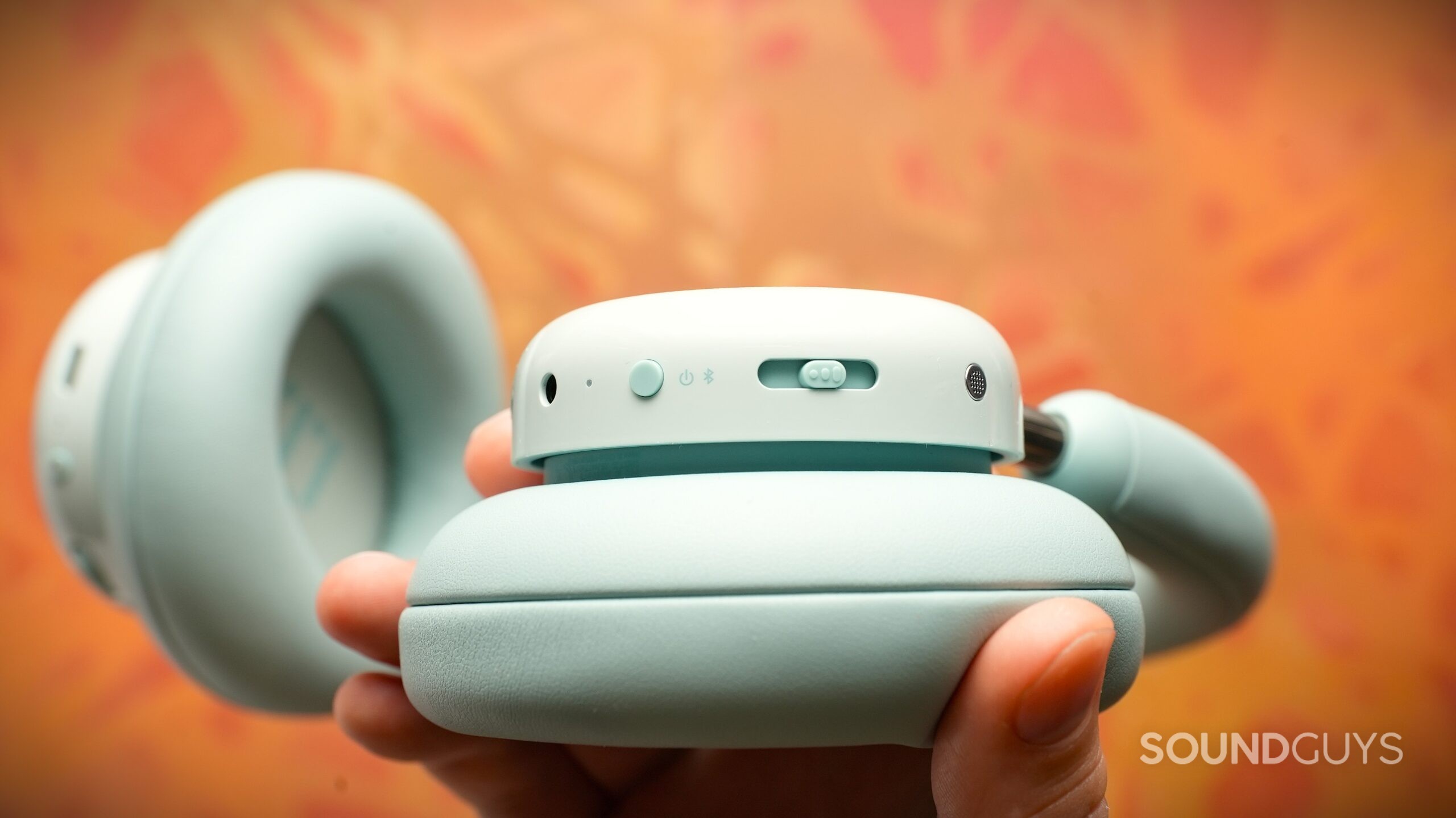
The Energy Slider can be remapped in the app to adjust either bass or treble emphasis, which adds some flexibility if you’re someone who likes to tweak sound on the fly. In practice, though, it feels more like a gimmick than a genuinely useful feature—cranking the bass doesn’t improve the sound quality, it just makes it bassier (more on that in the sound quality section).
The app also features spatial audio modes, including Concert mode for music and Cinema mode for movies. I found the concert mode did increase the sense of spatial width, but not depth. It also added more airiness and vocal presence, making the listening experience feel more immersive; however, some of the increased treble strength became fatiguing quickly. For cinema mode, I found it narrowed the width and extended the spatial depth, particularly for vocals, and added a lot of reverberance. Some sound sources were harder to distinguish and didn’t prefer the overall boomy character to the default sound profile for watching films.
How does the CMF Headphone Pro connect?
The CMF Headphone Pro uses Bluetooth 5.4 and supports AAC, SBC, and LDAC, enabling Hi-Res audio wirelessly at up to 24-bit/96kHz. Not everyone will hear the improvement over AAC, but for those who do, and have a compatible device, it’s a meaningful feature at this price point.
Pairing was quick and painless on my Android phone, thanks to Google Fast Pair, and there is also Microsoft Swift Pair support. The headphones support Bluetooth Multipoint, allowing you to connect to two devices simultaneously, and switching between devices works smoothly without feeling clunky.
The USB-C port on the headphones is for charging only—it doesn’t support USB audio. That’s okay, however, as there is a 3.5mm audio jack for wired listening, allowing you to listen to audio with zero latency and no battery drain.
To pair the CMF Headphone Pro with a new device, follow these steps:
- Press and hold the power button to turn the headphones on
- Continue holding the power button until you hear “pairing” (the LED will flash)
- Select “CMF Headphone Pro” from your device’s Bluetooth settings
On Android devices with Google Fast Pair or Windows devices with Microsoft Swift Pair, a pairing prompt should appear automatically when the headphones enter pairing mode.
How long do the CMF Headphone Pro’s battery last?
In our standardized testing, the CMF Headphone Pro lasted 43 hours and 9 minutes with ANC on—falling slightly short of CMF’s claimed 50 hours, but still impressive for budget headphones at this price. To put that in perspective, that’s enough for nearly two full work weeks of daily two-hour commutes, or multiple cross-country flights before needing to reach for a cable.
Quick charging works as advertised—a 5-minute charge delivers enough juice for several hours of listening, which is handy when you’re in a rush. A full charge takes around two hours via USB-C.
How well do the CMF Headphone Pro cancel noise?
The CMF Headphone Pro’s active noise cancelation performs surprisingly well for budget headphones, attenuating an average of about 81% of outside noise with ANC enabled.
Loading chart ...
Looking at our measurements, the ANC makes the biggest difference in the lower frequencies—reaching around 30dB of attenuation in the sub-bass and bass range, where you’d encounter rumbling plane engines or bus noise. In the higher frequencies, the headphones meet (and sometimes exceed) CMF’s claimed 40dB of noise reduction, effectively handling the hiss of air conditioning or distant traffic.
The headphones offer three ANC modes, but I found it best to set ANC to high in the Nothing X app and leave it there. The adaptive switching between modes doesn’t work particularly well in practice, and manual control gives you more consistent results.
Transparency mode works well to hear your environment while wearing the headphones. I was able to hear the voices of people speaking in my immediate vicinity clearly, as well as the cars driving by outside my apartment window.
How do the CMF Headphone Pro sound?
The CMF Headphone Pro sound pretty good for $99 headphones, especially if you like bass, though they could use more clarity in the highs.
Multi-Dimensional Audio Quality Scores (MDAQS)
The chart below shows how the Multi-Dimensional Audio Quality Score (MDAQS) algorithm from HEAD acoustics assesses the sound of the CMF Headphone Pro. The sound quality is rated on a scale from 1.0 (very bad) to 5.0 (very good).
Hold up! Something’s missing
In our quest to make background upgrades over the last month or so, we’ve been running validations on a new version of MDAQS, which should be live shortly. Until then, sit tight, and we’ll update the article when the latest figures become available.
- Timbre (MOS-T) represents how faithfully the headphones reproduce the frequency spectrum and temporal resolution (timing information).
- Distortion (MOS-D) represents non-linearities and added noise: higher scores mean cleaner reproduction.
- Immersiveness (MOS-I) represents perceived source width and positioning: how well virtual sound sources are defined in three-dimensional space.
See here for an explanation of MDAQS, how it works, and how it was developed.
Reviewer’s notes

Editor’s note: this review uses a hover-enabled glossary to describe sound quality based on a consensus vocabulary. You can read about it here.
Objective Measurements
Loading chart ...
The chart above compares the measured frequency response of the CMF Headphone Pro with the bass slider set to maximum and set to minimum. As you can see, when set to maximum, there is about 8 dB more emphasis added to the low-end. That is far too much bass for my liking, and for what our house curve suggests most people will enjoy, as it can result in tracks sounding boomy with prominent reverberance.
Aside from that, there are some minor deviations, but nothing too dramatic until the roll-off after 8kHz. However, this is fairly common in budget headphones, where the driver quality and tuning often struggle to maintain extension into the highest frequencies.
Classical EQ Preset
Loading chart ...
The Classical EQ preset adds extra bass strength, which seems counterintuitive for orchestral music. Classical recordings typically rely on clear string sections, woodwinds, and brass instruments. The added low-end emphasis can give timpani and double basses more weight, but it risks making the overall presentation boomy and less clear.
Rock EQ Preset
Loading chart ...
The Rock EQ preset adds substantial bass and lower midrange emphasis, which can work well for rock’s driving energy. The extra low-end gives kick drums and bass guitars more weight, while the boosted lower midrange adds body to rhythm guitars. However, the overall elevation across these frequencies might make some mixes feel overly full or boomy, depending on the production. For fans of aggressive, bass-heavy rock, this tuning could be appealing.
Electronic EQ Preset
Loading chart ...
The Electronic EQ preset boosts bass and adds prominent treble peaks around 5kHz and 8kHz. For electronic music—which relies heavily on synthesized bass, kick drums, and hi-hats—this tuning makes some sense. The elevated bass provides the foundation that electronic genres demand, while the treble peaks can bring out the crisp transients of programmed percussion and synth leads. However, the scooped midrange (200Hz-1kHz) and emphasis on the highs might make the sound feel somewhat harsh or fatiguing over long listening sessions.
Vocals EQ Preset
Loading chart ...
The Vocals EQ preset cuts bass substantially and reduces emphasis across most of the frequency range, keeping the focus primarily on the midrange where vocals sit. This makes sense in theory—reducing competing frequencies should bring vocals forward in the mix. However, the overall reduction in bass and lower midrange means you lose the warmth and body that gives voices their natural character. The result can bring vocals to the forefront, but at the cost of making the entire mix sound thin and lacking fullness. For vocal-focused listening like podcasts or audiobooks, this works, but for music, it strips away too much.
Can you use the CMF Headphone Pro for phone calls?
Yes, the microphone on the CMF Headphone Pro is suitable for casual phone calls in environments with minimal background noise. Noise rejection is fairly good, despite some pops and crackles, and while voices don’t sound natural, they remain intelligible and clear. Listen to our sample recordings below and let us know what you think in our poll.
CMF Headphone Pro microphone demo (Ideal conditions):
How does the microphone sound to you?
CMF Headphone Pro microphone demo (Office conditions):
CMF Headphone Pro microphone demo (Street conditions):
CMF Headphone Pro microphone demo (Windy conditions):
CMF Headphone Pro microphone demo (Reverberant space):
Should you buy the CMF Headphone Pro?
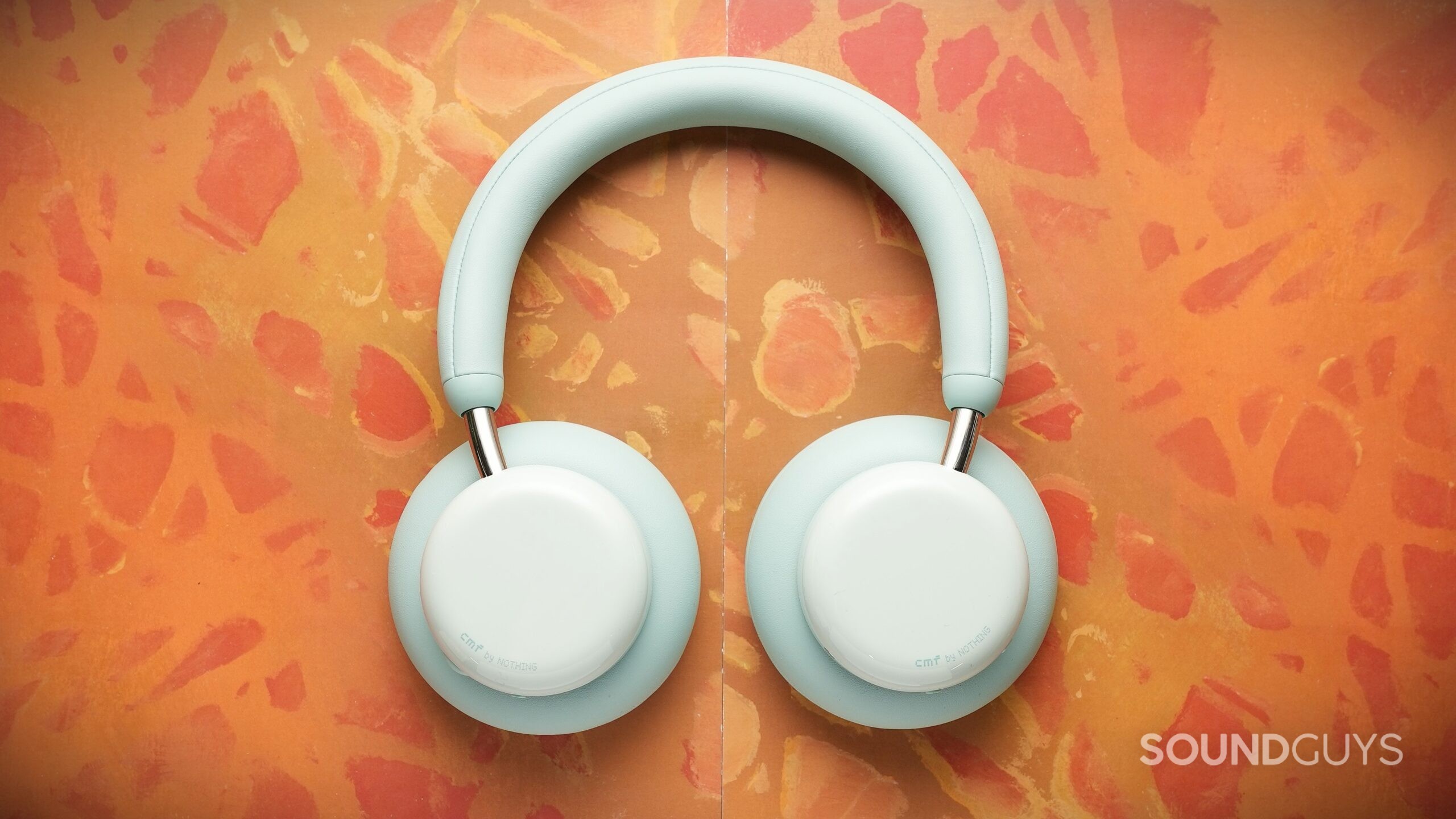
The CMF Headphone Pro delivers some valuable features for the price: 43+ hours of battery life with ANC on, solid noise cancelation, and LDAC support for Hi-Res audio. The sound quality is also decent, avoiding the excessive bass emphasis common in budget headphones and offering good detail separation and spatial width. However, I can’t help but miss the full parametric EQ in the Nothing X app and think of the potential benefits that could have brought to the sound quality here. The unique bass slider is more of a gimmick than a useful EQ tool and really just adds boominess and distortion.
Some people will appreciate the standout, colorful look of these headphones, as well as the ability to mix and match earpads. Although I do think $25 per pair is steep, and I hope to see more varied materials in the future, as the cheap, creaky plastic build and uncomfortable headband can make extended listening difficult. In the end, I think the “Pro” branding is misleading—these feel like they should have been the standard CMF Headphone for ~$20 less, not a Pro offering at $99. I don’t want to imagine what a standard, further stripped-down version of these headphones would be. Regardless, the CMF Headphone Pro is a good value proposition for casual listeners.
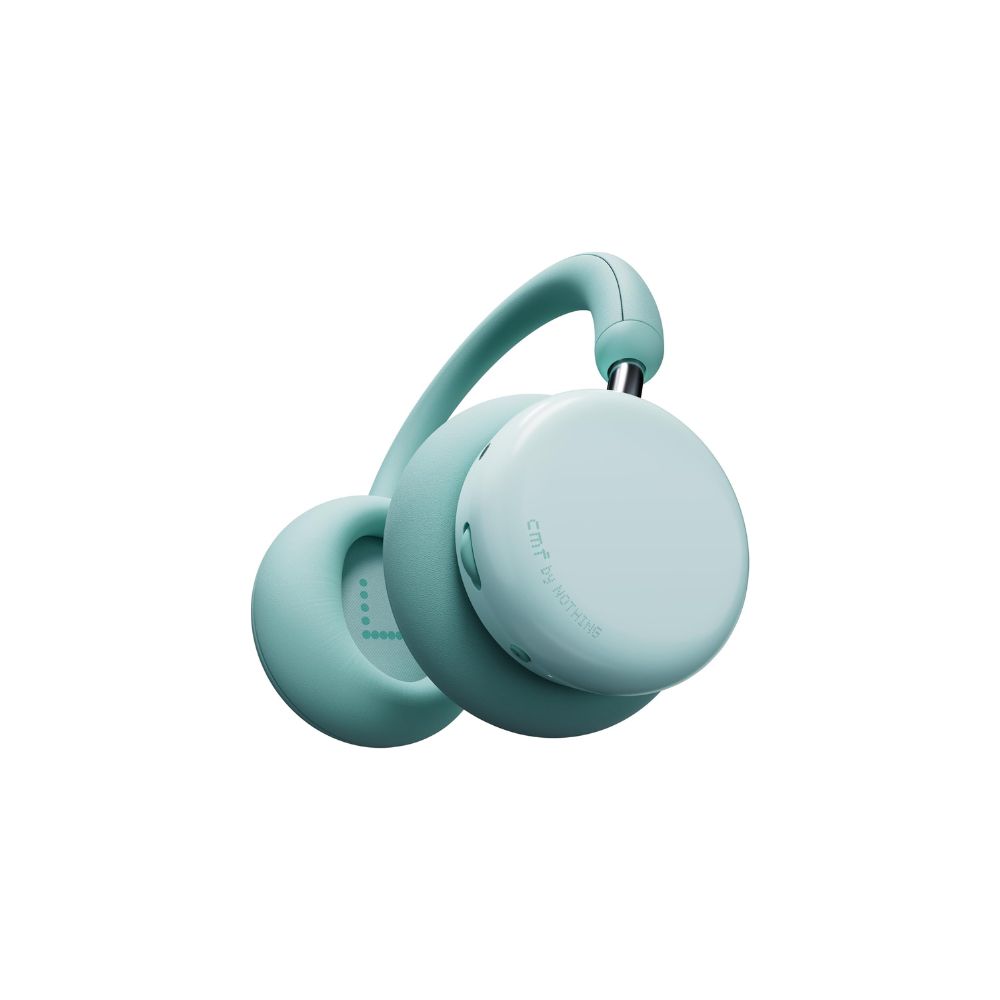

Would you buy the CMF Headphone Pro?
What should you get instead of the CMF Headphone Pro?
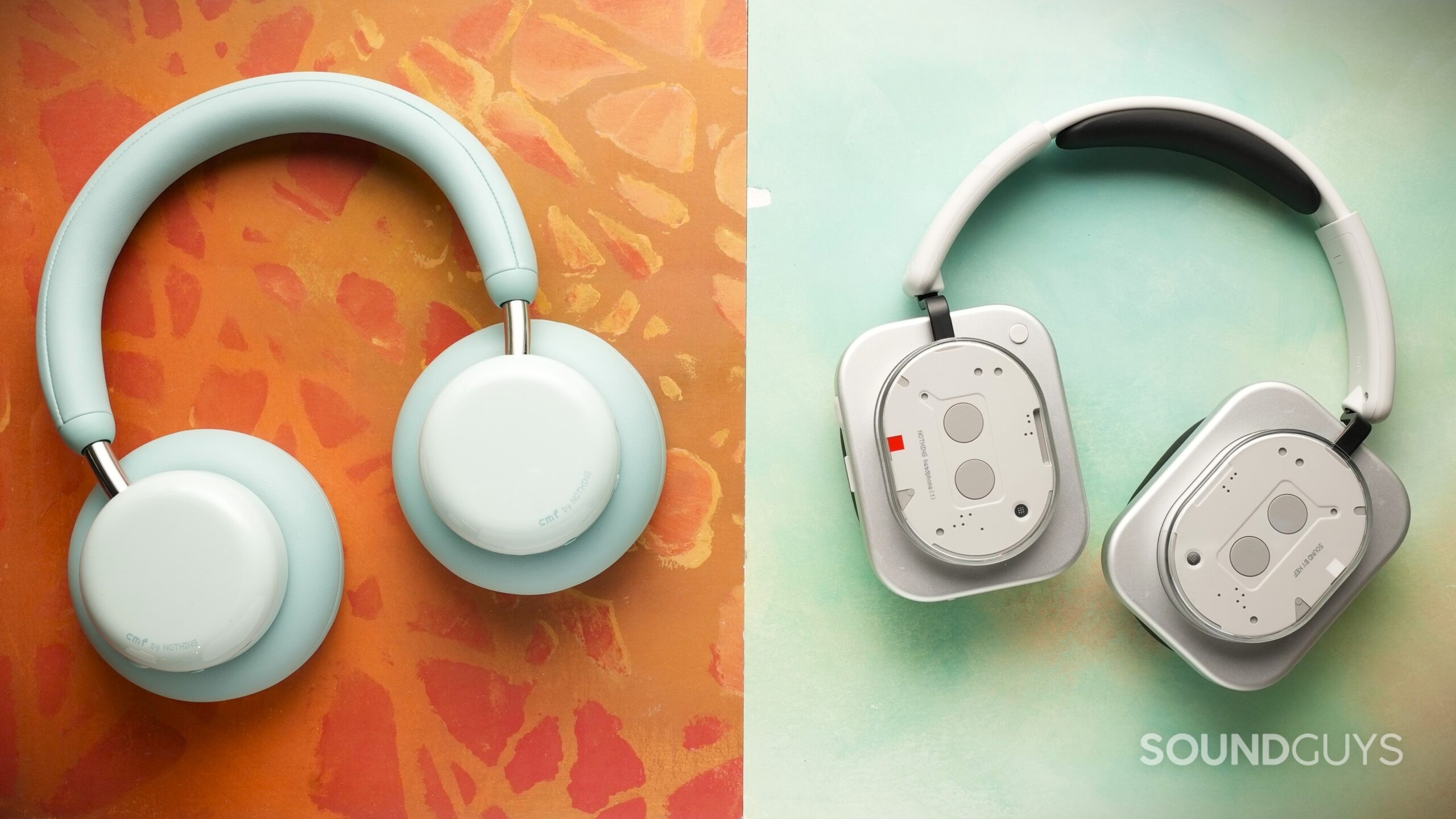
The obvious alternative in the same family is the Nothing Headphone (1), which honestly should have been called the “Headphone Pro,” given how much more premium it is in execution. For $200 more, you get substantially better build quality with metal parts that feel solid, superior comfort for extended listening sessions, and an IP52 water resistance rating that actually makes them viable for workouts. Most importantly, the Nothing Headphone (1) includes the full 8-band parametric EQ, which is essential for getting the sound dialed in exactly as you like. The battery life is comparable (43 hours with ANC), the ANC performance is equally strong, and you get the same LDAC support. If you can stretch your budget to $299, the Nothing Headphone (1) delivers a more premium experience that justifies the price difference. The CMF Headphone Pro feels like it should have been the standard “CMF Headphone” at $70, not a $99 offering positioned against Nothing’s far superior first attempt at over-ears.


CMF Headphone Pro review: FAQs
No, the CMF Headphone Pro are not ideal for workouts. With only an IPX2 rating, they offer minimal protection against sweat and moisture. The bulky over-ear design and lack of secure fit make them impractical for high-movement activities.
es, you can use the CMF Headphone Pro in wired mode with the 3.5mm analog cable while they're charging via USB-C. However, you cannot use them wirelessly while charging.
No, the CMF Headphone Pro do not support Dolby Atmos. They do feature spatial audio modes (Concert and Cinema) through the Nothing X app, but these are not Dolby Atmos.
The CMF Headphone Pro can work for casual gaming, especially in wired mode, where latency is eliminated. They also have a low-latency wireless mode via the Nothing X app, but they lack any specialized sound profiles for competitive gaming.
Yes, the ear cushions on the CMF Headphone Pro are swappable. Replacement cushions in different colors are available for $25.
Thank you for being part of our community. Read our Comment Policy before posting.